
Since the berths' opening on July 4th, 1953, the Port has played a pivotal role in facilitating world-class travel, trading, and visitor experiences.
Dover, with its strategic geographic location, has served as the crucial link between Britain and Europe for centuries. The Port of Dover stands as an enduring connection between the British Isles and Europe, having withstood the test of time and served as a symbol of fortitude and resilience during the World Wars.
Owned and operated by the Dover Harbour Board, a statutory corporation formed by Royal Charter in 1606 by King James I, the Port facilitated the crossing of over a million passengers annually during the 20th century.
However, prior to 1953, passengers primarily embarked on foot from rail services, while cars were loaded and unloaded using cranes. The introduction of the innovative road bridge, known as a ‘linkspan’, at the Port of Dover enabled vehicles to directly drive from the quayside to the ferry regardless of the tide, a groundbreaking concept in the United Kingdom.
The advent of roll-on, roll-off ferries led to the emergence of larger stern-loading vessels and a significant increase in passenger capacity across the channel. This sparked a surge in traffic through Dover, as more people began to opt for traveling to Europe with their cars for summer vacations.
Furthermore, the introduction of the linkspan at the Port of Dover paved the way for a transformative shift in freight transportation within the UK. Roll-on, roll-off freight rapidly became an integral part of the Port's operations within a mere 25 years.
Today, the Port of Dover handles £144 billion of UK trade annually, facilitating 33% of all trade with the EU. It also handles 2.4 million trucks per year, surpassing all other UK ports. Additionally, the Port of Dover serves as the UK's second busiest cruise port, welcoming over 25 cruise lines and 200,000 guests annually.
With a focus on driving efficiency and fostering innovation, the Port is poised to ensure an even more prosperous future in the next 70 years and beyond.
Doug Bannister, CEO of the Port of Dover, said: " 'The Port of Dover always has been, and always will be, Britain’s bridge to trade with Europe. At the opening of the ferry berths in 1953, it was declared that the new berths would symbolise to motorists the modern portals of the Gateway to England, so appropriately inaugurated at the commencement of the new Elizabethan era.
“The Port remains a symbol of such innovation in the 21st century, though it is apt that shortly after the commencement of the Carolean era, the Port of Dover's ambition is being pushed further than ever; as we work on our mission to empower exchange across the channel for the next 70 years and beyond.”
Committed to sustainability, the Port has implemented measures to become carbon net zero by 2025. Embracing new technologies, such as the recent arrival of a hybrid ferry, Dover is evolving into a smarter port, leveraging digital technology and AI to address challenges and realise the vision of smart and digital borders.

On July 4th, 1953, the Port of Dover's roll-on, roll-off berths opened for the first time, transforming ferry travel forever.
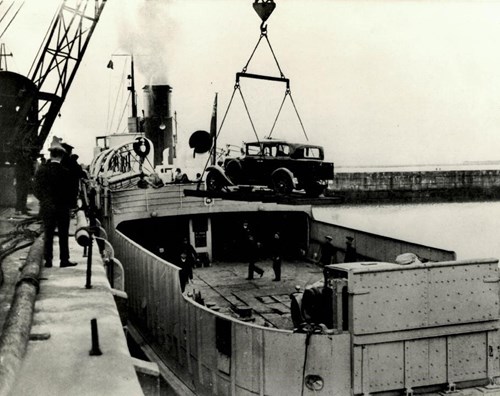
Prior to 1953, most passengers boarded ships on foot from rail services and cars were typically loaded on and off ships via cranes from the open deck to the quayside
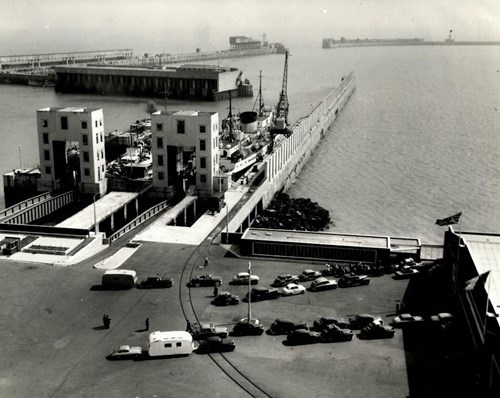
The visionary terminal was designed during 1949, to be built on land to be cleared in the Eastern Docks.
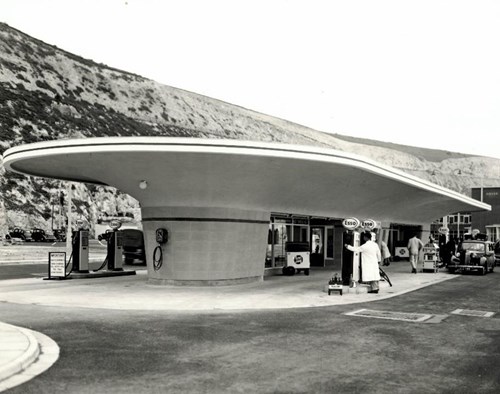
It was designed entirely around car traffic, with a petrol station, services, a drive-through customs shed, and marshalling lanes by the twin berths.
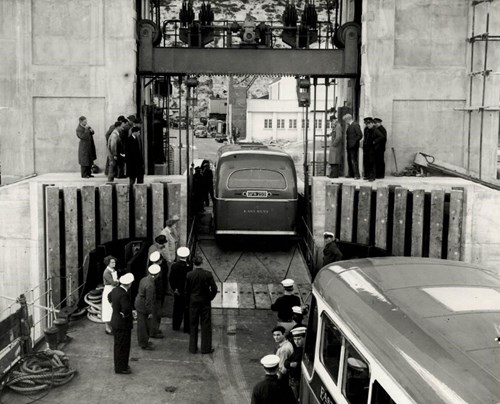
1953 was the first time in the United Kingdom that a road bridge (or 'linkspan') hinged from landside operations enabled vehicles to drive directly from the quayside to the ferry, at all stages of the tide.
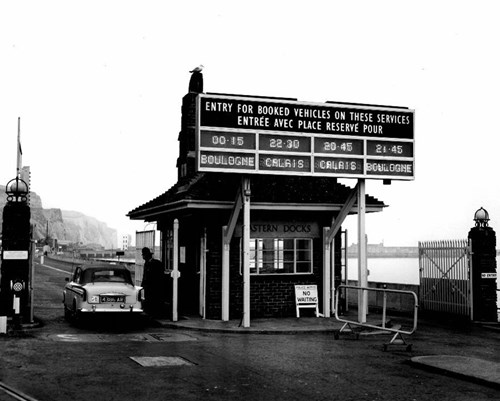
This was a passenger terminal for cars and coaches only, as roll-on roll-off freight traffic had yet to emerge.
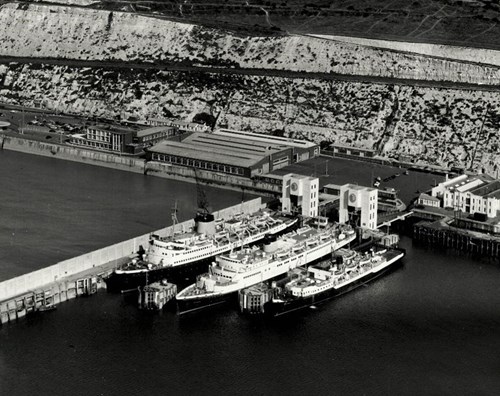
Traffic increased rapidly as travelling to Europe with your car for a summer holiday grew in popularity. A new generation of larger ferries was introduced to cater for the increasing demand. New and old are seen together here in 1959. Just twenty-five years later, freight had become a mainstay of the cross-Channel ferry business

Dover remains the UK's busiest international ferry port and a vital gateway for the movement of people and trade, handling £144 billion of trade per year, 33% of UK trade in goods with the EU and welcoming over 11 million passengers. Today, the Port of Dover is closing the gap every day between the UK and the world by connecting trade, travel, visitors and communities.